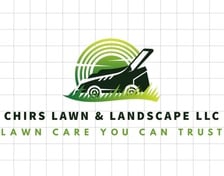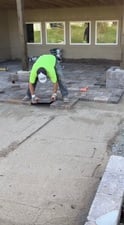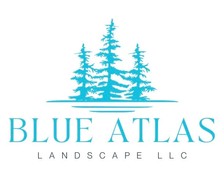
Get matched with top mulch and topsoil pros in Lees Summit, MO
There are 8 highly-rated local mulch and topsoil pros.
Matching on Angi


TRUSTED BY HOMEOWNERS
 4.5
4.5  47
47 Verified Reviews for Mulch And Topsoil Service pros in Lees Summit, MO
*The Angi rating for Mulch And Topsoil Service companies in Lees Summit, MO is a rating based on verified reviews from our community of homeowners who have used these pros to meet their Mulch And Topsoil Service needs.
*The HomeAdvisor rating for Mulch And Topsoil Service companies in Lees Summit, MO is a rating based on verified reviews from our community of homeowners who have used these pros to meet their Mulch And Topsoil Service needs.
Last update on April 25, 2025
Mulch and topsoil pros in Lees Summit

I started my company year 2023 but that doesn't mean Im not a professional I've been doing landscaping for more than 10 years. I know the game well; what I love about landscaping is I can make you dream landscape come true not only that I will work with you throw the way. feel free to ask me any questions that you have Im more then happy to help.
I started my company year 2023 but that doesn't mean Im not a professional I've been doing landscaping for more than 10 years. I know the game well; what I love about landscaping is I can make you dream landscape come true not only that I will work with you throw the way. feel free to ask me any questions that you have Im more then happy to help.

You Grow We Mow it ! Mowing Fall/Spring clean up Mulching landscaping trimming Roof and gutter clean up and more ...
"Juan mows my lawn weekly and also provided services for aeration and overseeding for the Fall after the heat had killed a lot of my grass."
LaTicia A on October 2024
You Grow We Mow it ! Mowing Fall/Spring clean up Mulching landscaping trimming Roof and gutter clean up and more ...
"Juan mows my lawn weekly and also provided services for aeration and overseeding for the Fall after the heat had killed a lot of my grass."
LaTicia A on October 2024

We take great pride in our experience, expertise, quality and customer service that we provide to meet your needs. It is our mission to provide excellent workmanship and complete customer satisfaction from start to completion of a project. In order to understand the needs and expectations of our customers, we take great care to work and communicate with every customer a professional manner. Our reputation is based on service, safety and quality, regardless of how large or small the job.
We take great pride in our experience, expertise, quality and customer service that we provide to meet your needs. It is our mission to provide excellent workmanship and complete customer satisfaction from start to completion of a project. In order to understand the needs and expectations of our customers, we take great care to work and communicate with every customer a professional manner. Our reputation is based on service, safety and quality, regardless of how large or small the job.

Welcome to Four Season Landscaping & Hardscaping! We are committed to exceeding your expectations. As experts, we will handle your needs with the high quality expertise that your home or business deserves. We offer competitive prices and customer satisfaction is our number one priority. Call us today!
"David is a knowledgeable and friendly person. Our project was an intimidating and big retaining wall. David listened to our ideas and we ended up following his expert advice. He was fast and did an exceptional job. My background is construction and I’m very picky He exceeded all my expectations and we have a super good looking wall that everybody admires. Many many thanks to David and his crew. "
Jeff W on April 2025
Welcome to Four Season Landscaping & Hardscaping! We are committed to exceeding your expectations. As experts, we will handle your needs with the high quality expertise that your home or business deserves. We offer competitive prices and customer satisfaction is our number one priority. Call us today!
"David is a knowledgeable and friendly person. Our project was an intimidating and big retaining wall. David listened to our ideas and we ended up following his expert advice. He was fast and did an exceptional job. My background is construction and I’m very picky He exceeded all my expectations and we have a super good looking wall that everybody admires. Many many thanks to David and his crew. "
Jeff W on April 2025

At Patio Outdoor Solutions, we specialize in designing outdoor living spaces that are both beautiful and functional. We offer a range of services including 2D and 3D landscape renderings: Pools, spas, decks, patios, outdoor structures, fire features, landscape lighting, retaining walls, water features, plants, landscape rock, mulch, and boulders. We also offer an exterior paint visualizer to help you envision your home. Let’s work together to create your dream outdoor project!
At Patio Outdoor Solutions, we specialize in designing outdoor living spaces that are both beautiful and functional. We offer a range of services including 2D and 3D landscape renderings: Pools, spas, decks, patios, outdoor structures, fire features, landscape lighting, retaining walls, water features, plants, landscape rock, mulch, and boulders. We also offer an exterior paint visualizer to help you envision your home. Let’s work together to create your dream outdoor project!

Blue Atlas Landscape offers only the best in quality workmanship and professional courtesy. We specialize in retaining walls, drainage solutions, paver patios, landscape maintenance, and landscape install. Our services include but aren’t limited to; landscape design/install, retaining walls, paver patios/walkways, French drains, irrigation repair, shrub/tree removal, sod installation, overseeding/aeration, dirt work grading/resloping, material delivery and disposal. We pride ourselves on our high quality of work and customer satisfaction will always be our #1 goal. We are committed to quality work and outstanding results and are strongly involved in local community activities. We wish you the best and look forward to working together!
"This young man has always done a fantastic job for us. We have pretty good size yard with lots of trees and when he's finished there's barely a leaf left. He is very careful around our landscaping which had been a problem in the past with other companies. He is prompt and courteous and I would highly recommend for a leaf job big or small!"
Kim F on December 2024
Blue Atlas Landscape offers only the best in quality workmanship and professional courtesy. We specialize in retaining walls, drainage solutions, paver patios, landscape maintenance, and landscape install. Our services include but aren’t limited to; landscape design/install, retaining walls, paver patios/walkways, French drains, irrigation repair, shrub/tree removal, sod installation, overseeding/aeration, dirt work grading/resloping, material delivery and disposal. We pride ourselves on our high quality of work and customer satisfaction will always be our #1 goal. We are committed to quality work and outstanding results and are strongly involved in local community activities. We wish you the best and look forward to working together!
"This young man has always done a fantastic job for us. We have pretty good size yard with lots of trees and when he's finished there's barely a leaf left. He is very careful around our landscaping which had been a problem in the past with other companies. He is prompt and courteous and I would highly recommend for a leaf job big or small!"
Kim F on December 2024

Welcome to Wolves of Landscaping!We are committed to exceeding your expectations. As experts, we will handle your needs with the high quality expertise, that your home or business deserves. We offer competitive prices, and customer satisfaction is our number one priority. Call us now! Yoe:
"Ambos hicieron un gran trabajo, son muy rápidos y organizados. Los recomiendo."
Dreilys G on April 2025
Welcome to Wolves of Landscaping!We are committed to exceeding your expectations. As experts, we will handle your needs with the high quality expertise, that your home or business deserves. We offer competitive prices, and customer satisfaction is our number one priority. Call us now! Yoe:
"Ambos hicieron un gran trabajo, son muy rápidos y organizados. Los recomiendo."
Dreilys G on April 2025
Krispy Kuttz LawnCare and landscaping LLC. Has many different services to offer such as Complete lawnCare service,landscaping design or arrangement ,deweeding of flower beds,landscaping maintenance,bush trimming,brush & debre removal,tree trimming,mulching,leaf raking and removal,retaining wall construction,gutter clean outs,garden preparation and flower planting ,grading,parking lot cleaning,snow removal etc.
Krispy Kuttz LawnCare and landscaping LLC. Has many different services to offer such as Complete lawnCare service,landscaping design or arrangement ,deweeding of flower beds,landscaping maintenance,bush trimming,brush & debre removal,tree trimming,mulching,leaf raking and removal,retaining wall construction,gutter clean outs,garden preparation and flower planting ,grading,parking lot cleaning,snow removal etc.
With over two decades of tree trimming, removal and landscaping experience in the Kansas City area, Wilson Tree And Landscape brings a wealth of expertise and local knowledge to every project. Founded and led by a dedicated firefighter with the Kansas City, MO Fire Department, we understand the importance of reliability, integrity, and attention to detail. Our passion for safe tree and landscaping services stems from a deep-rooted love for nature and a desire to enhance the beauty and functionality of outdoor spaces for our clients across the community.
With over two decades of tree trimming, removal and landscaping experience in the Kansas City area, Wilson Tree And Landscape brings a wealth of expertise and local knowledge to every project. Founded and led by a dedicated firefighter with the Kansas City, MO Fire Department, we understand the importance of reliability, integrity, and attention to detail. Our passion for safe tree and landscaping services stems from a deep-rooted love for nature and a desire to enhance the beauty and functionality of outdoor spaces for our clients across the community.
We offer a variety of tree services. We guarantee your satisfaction, and we won’t leave until the job is done right. We pride ourselves on the quality of work we provide, while delivering great customer service! Check out all the services we offer below and call -or- click to schedule an estimate today! Now offering Lawn maintenance services!
"A large cottonwood tree had fallen between our yard and the neighbors. Our neighbor had used this service before and they responded quickly to his inquiry. Several services that we had used previously failed to respond even over a week later. KC tree services did such a fine job with removing the cottonwood that we inquired about them also trimming three large walnuts in our backyard that we had been looking to have trimmed. Initially they were going to come back later in the week but instead they were able to extend their day and finish that up also the same day. They did a great job of trimming the tees by taking the the weight off certain areas and removing dead branches. They were interactive with us when trimming to ensure that they met our goals and cleaned up well afterwards. Since we have had much trimming and trees taken down over the years we knew they were price competitive and did good work. We highly recommend their services."
Sophie L on July 2024
We offer a variety of tree services. We guarantee your satisfaction, and we won’t leave until the job is done right. We pride ourselves on the quality of work we provide, while delivering great customer service! Check out all the services we offer below and call -or- click to schedule an estimate today! Now offering Lawn maintenance services!
"A large cottonwood tree had fallen between our yard and the neighbors. Our neighbor had used this service before and they responded quickly to his inquiry. Several services that we had used previously failed to respond even over a week later. KC tree services did such a fine job with removing the cottonwood that we inquired about them also trimming three large walnuts in our backyard that we had been looking to have trimmed. Initially they were going to come back later in the week but instead they were able to extend their day and finish that up also the same day. They did a great job of trimming the tees by taking the the weight off certain areas and removing dead branches. They were interactive with us when trimming to ensure that they met our goals and cleaned up well afterwards. Since we have had much trimming and trees taken down over the years we knew they were price competitive and did good work. We highly recommend their services."
Sophie L on July 2024
Mulch and topsoil services FAQs
Mulch costs anywhere from $30 to $150 per cubic yard, depending on the type you choose. On the inexpensive end, red and black mulch are about $35 to $40 per cubic yard, and are typically made from recycled waste wood like shredded old pallets or deck material. Cedar, cypress, and rubber mulch cost anywhere from $100 to $120 per cubic yard. A pro can help you determine the type of mulch most suitable for your landscaping needs.
Topsoil costs from $12 to $55 per cubic yard, depending on the type you choose. For example, screened black dirt will cost about $15 per cubic yard. Loam (soil composed of sand, silt, and clay) costs about $17 per cubic yard. Standard screened topsoil costs about $20 per cubic yard. The type of topsoil you need depends on your landscaping plans.
Topsoil should go down first. If the topsoil is next to your house, make sure the grade slopes away from the house to keep water from pooling against your foundation and possibly leaking into your basement or crawl space. Don’t cover your decorative landscape mulch with topsoil as that defeats the purpose of laying down the mulch. If you’re trying to create a certain soil composition to improve plant growth, you’ll likely want compost mixed into the topsoil instead of mulch. Over time, any decorative wood mulch will simply decompose under the topsoil.
No, mulch itself does not necessarily attract termites even though it’s usually made of shredded wood. Some types of mulch like cedar or cypress resist termites because they’re toxic or unappetizing to the wood munchers. However, when the mulch is deep enough, say three inches or more, it creates a perfect habitat for insects of all kinds to build nests.
Although it’s not required to lay anything under mulch, it can help to put landscape fabric or plastic weed barrier down and lay mulch on top. The barrier helps keep weeds from growing up through your mulch. It also helps keep rodents and insects from burrowing into the ground underneath.















